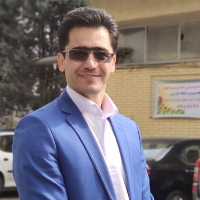Isometric Strength of Lower Extremity Muscles in Athletes with Hyperpronated Foot
Author(s):
Abstract:
Purpose
The proper neuromuscular recruitment patterns of hip and knee muscles are essential for dynamic stabilization of the knee. According to the kinematic chain, weakness in the performance of one motor segment can affect other segments of motion. Thus, the aim of this study was to compare the isometric strength of selected muscles of lower extremities in the hyperpronated foot with the same muscles in healthy male athletes. Methods
The present study is descriptive and correlational. Forty male athletes in two groups of hyperpronated foot and healthy male athletes (20 in each group) participated in this study. Pronated foot was examined by navicular drop and isometric strength of selected muscles in lower extremities was examined by Manual Muscle Test system (MMT). Then, the ratio of isometric strength of each muscle to body weight was compared between two groups. Data were analyzed by SPSS software, version 20 and the independent t test was used to compare the variables between the two groups. Results
The results showed that isometric strength of muscles, hip abductors (P =. 002), external rotators of hip (P =. 007), and quadriceps muscles (P =. 031) have decreased significantly in the the group of hyperpronated foot. Conclusion
The hyperpronated foot changes the muscle strength of lower extremity. These changes may be due to neuromuscular compensation because of the changes in the medial longitudinal arch. More research is needed to determine whether these changes in muscle strength are related to lower extremity injury.Keywords:
Language:
English
Published:
Physical Treatments Journal, Volume:4 Issue: 2, 2015
Pages:
32 to 37
https://www.magiran.com/p1375325
سامانه نویسندگان
مقالات دیگری از این نویسنده (گان)
-
The effect of six weeks of cognitive functional therapy on pain, disability and fear of movement in people with chronic non-specific neck pain
Norollah Javdaneh*, Nazanin Kamrani Faraz
Journal of Anesthesiology and Pain, -
The effect of active scapular training on pain, disability, neck range of motion and the scapular alignment in people with neck pain
Norollah Javdaneh*, Amir Letafatkar, Malihe Hadadnezhad
Feyz,


